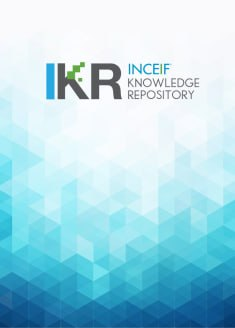
Browse by Author "Raditya Sukmana"
Results Per Page
Sort Options
- PublicationDynamics of Islamic financing in Malaysia: causality and innovation accountingRaditya Sukmana; Mansor H. Ibrahim (Routledge, 2011)
The article evaluates dynamic interactions between Islamic financing and macroeconomic and financial variables for Malaysia using the Toda-Yamamoto (1995) causality test and innovation accounting approach. The results suggest strong causal influences of interest rate on Islamic financing but insignificant causal relations from real stock prices or real production to Islamic financing. Thus, while the results suggest that Islamic financing in Malaysia is resilient to boom/bust cycles of the stock market or fluctuations in real activity, Islamic banks under a dual-banking environment are not spared from fluctuations in interest rate or monetary conditions of the country.
- PublicationFinance and output volatility during the global financial crisisSiong Hook Law; Raditya Sukmana; Mansor H. Ibrahim (Faculty of Economics and Business, Universitas Islam Internasional Indonesia, 2024)
This paper assesses the effectiveness of financial depth and financial inclusion in the mitigation of output volatility during the 2008-2010 Global Financial Crisis. The paper also evaluates whether finance is more effective in countries with more developed financial systems, higher levels of economic developments, sounder banking systems, and better political stability. Employing a cross-sectional dataset covering more than 100 countries, our results indicate the ability of finance in subduing output volatility during the crisis. Our evidence is also concrete in suggesting the ability of finance in reducing output volatility in more financially developed, advanced, and politically stable countries. However, the evidence is unclear on whether finance is beneficial for countries characterized by low, intermediate, or high banking stability. In addition to these findings, the preponderance of evidence tends to suggest the better ability of financial usage as compared to financial access in mitigating aggregate fluctuations during the crisis. Finally, our additional analysis reveals that finance functions well in stabilizing output when output volatility is high.
- PublicationGold investment as an inflationary hedge: the Malaysian evidenceRaditya Sukmana; Mansor H. Ibrahim (IIUM Press, 2009)
The paper assesses empirically the inflation-hedging properties of gold and, as comparison, of the stock market for Malaysia using montly data from July 2001 to May 2007. The results provide clear evidence that, over the sample period, gold serves as a good inflationary hedge. However, the hedging value seems to be lacking in stock prices. More specifically, from regression analyses, we note that gold provides a good hedge over all investment horizons considered and with better hedging at longer horizons. Moreover, from the VAR-based impulse response functions, the return on gold investment seems to increase immediately in response to inflation shocks. For the stock return, we find no evidence of its significant relation or significant response to inflation regardless of the horizons used to compute stock return and inflation.
- PublicationHow Islamic are Islamic banks? A non-linear assessment of Islamic rate - conventional rate relationsRaditya Sukmana; Mansor H. Ibrahim (ScienceDirect, 2017)
In this paper, we perform a non-linear assessment of Islamic rate - conventional rate relations for the case of Malaysia. Using monthly data covering the period January 1999 to November 2016, we find strong evidence supporting non-linear reactions of the Islamic investment rates to conventional rates in the long run and/or short-run for all matched maturities. More precisely, the Islamic investment rates exhibit faster upward movement (slower downward movement) in responses to conventional deposit rate increases (decreases). The asymmetric pricing behaviour of Islamic banks however tends to weaken as maturity lengthens. Accordingly, we infer that Islamic banks do not rigidly peg their investment deposit rates to conventional deposit rates as some have claimed in questioning the Islamicity of Islamic banks.
- PublicationMonetary policy and exchange rate in a large emerging economyRaditya Sukmana; Mansor H. Ibrahim (Sage Journals, 2023)
This article examines the causal relation between monetary policy and an exchange rate for a large emerging economy, Indonesia. In the analysis, we employ a vector autoregressive (VAR) model comprising of the rupiah exchange rate, monetary policy variable (interest rate or interest rate differential) and inflation rate and use monthly data after the global financial crisis from 2009 to 2022. Our baseline result suggests that the rupiah exchange rate appreciates following monetary policy tightening. We note further that the appreciating effect of monetary policy is more apparent when the interest rate differential is used as an indicator of monetary policy and is robust to the addition of the fourth variable (alternatively the US inflation, market uncertainty and oil price) in the VAR framework. These results likely reflect the importance of central bank independence and inflation-targeting framework in enhancing the credibility of Indonesia's monetary policy.
- PublicationRestructuring and bank performance in dual banking systemRaditya Sukmana; Mansor H. Ibrahim (Faculty of Economic and Business Universitas Islam Negeri (UIN) Syarif Hidayatullah Jakarta, 2021)
This paper assesses the impact of changing competition landscape and Islamic bank penetration on bank risk, profitability and capitalization. This study utilizes an unbalanced panel dataset consisting of 37 commercial banks over the period 1997 to 2015. The paper uses a panel VAR methodology to discern the interactions between bank competition and Islamic banking presence on one hand and bank performance on the other hand. We find evidence supportive of both competition - stability and competition - fragility views for conventional banks. The results suggest that bank competition improves conventional bank risk and, at the same time, lower profitability and capital holdings. As for Islamic banks, competition seems to robustly influence only bank profitability. Finally, we note that increasing Islamic bank penetration improves the risk profile of conventional banks and, as expected, reduces their market power. These results bear important implications on the design of competition policies in a dual banking system as well as on the development of the Islamic banking sector.
Abstract View
2677224
View & Download
199186
